No matter who you are, newbie or veteran, at some point your Windows system is going to run into problems that are not that easy to diagnose. (It also happens on other operating systems.) What do you do in this case? Here’s you will find 15 Windows Diagnostic Tools to Check PC Health in Windows 7, 8, and 10.
You could hire someone to fix the problem for you, but that should be a last resort. You don’t have to pay anyone when you can easily figure out the problem yourself using tools that you can download for free.
We recommend trying these Windows 7 Diagnostic Tools to Check PC Health first. You will be surprised how much you can solve with just that! If you still can’t fix the problem, bring the cavalry.
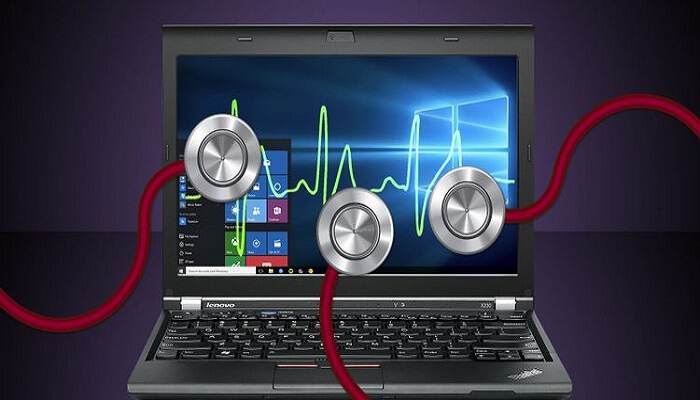
Table of Content:
- System Diagnostic tools
- Network Diagnostic tools
- Drive Diagnostic Tools
- Memory Diagnostic tools
- Display Diagnostic tools
- Malware Cleaning tools
◙ Windows system diagnostic tools
Hardware problems can be a huge pain in the neck on Windows 7, 8 & 10. They occur most often when you are using an older version of the operating system (e.g. Windows 7, Windows 8, or Windows 10) or an innovative version (e.g. Windows Insider).
However, sometimes all you want to know is what hardware you are using. These are the tools that you should definitely be using for any of these use cases. These Windows 7 Diagnostic Tools can help you to resolves all errors in your Windows 7 PC.
1- CPU-Z
CPU-Z is a small program that searches your system for its internal hardware configuration. This is essential if you ever want to update your PC parts and avoid incompatibility issues.
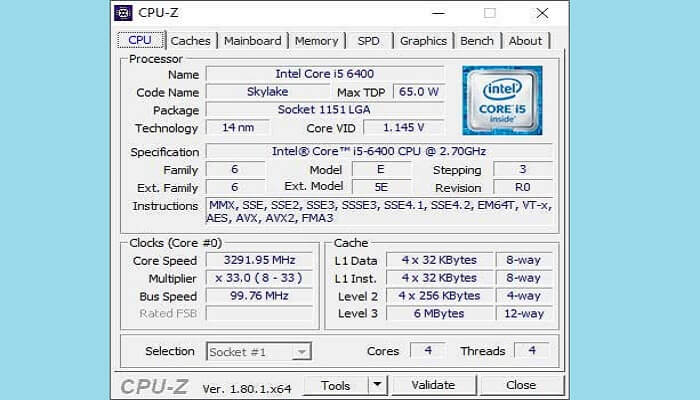
But it’s also good for forgetting which components you installed, especially if you built your own PC, and checking the components out whenever you buy a used PC from someone you may not trust.
2- Performance Monitor
As in older versions of the operating system, Windows 10 has a performance monitor, except that it is now an app. After launch, take a look at the sidebar. Under Monitoring Tools, you should see Performance Monitoring.
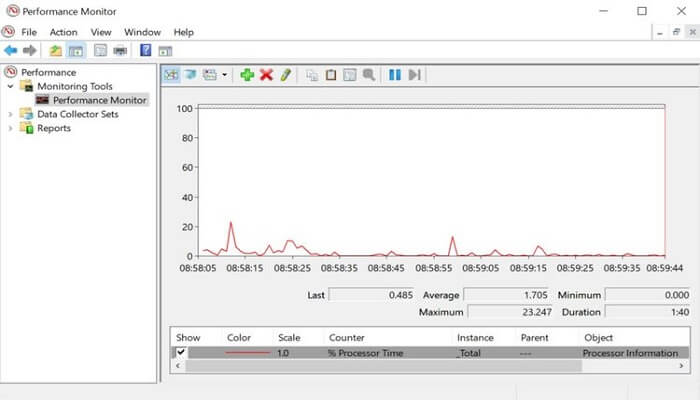
By default, the monitor only shows “% Processor Time” which shows how much CPU is being used at any given time. However, you can add more counters such as disk usage, energy consumption, paging file size, search index size and more.
3- Reliability Monitor
The Reliability Monitor is a hidden tool that has been around since Windows Vista, but so many people have never heard of it. It’s located in the Control Panel under System & Security> Security & Maintenance> Maintenance> View Reliability History.
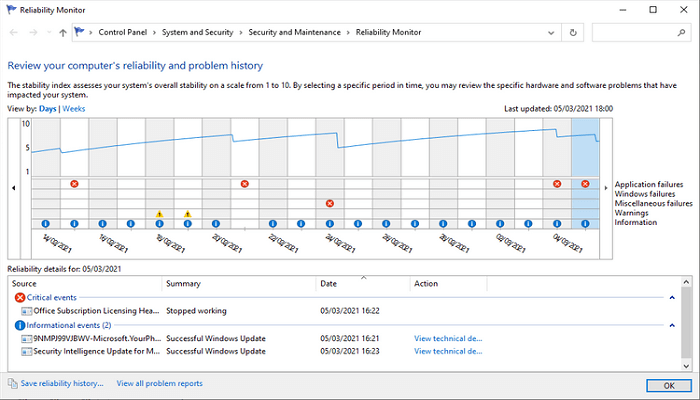
Here you can see a history of your system and a timeline of events and errors that occurred over a period of time. The blue line is an estimated meter from 1-10 that how stable your PC is over time.
If something crashes frequently this is a good place to look as you can select the error and look for a solution.
4- HWiNFO
HWiNFO is the most perfect tool to monitor your system summary on a windows PC. It shows all information about your computer – from the fan voltage to CPU temperatures. In fact, if you are using a Ryzen processor, HWiNFO can be your go-to choice as an alternatives if CPU-Z is showing incorrect readings on your pc.
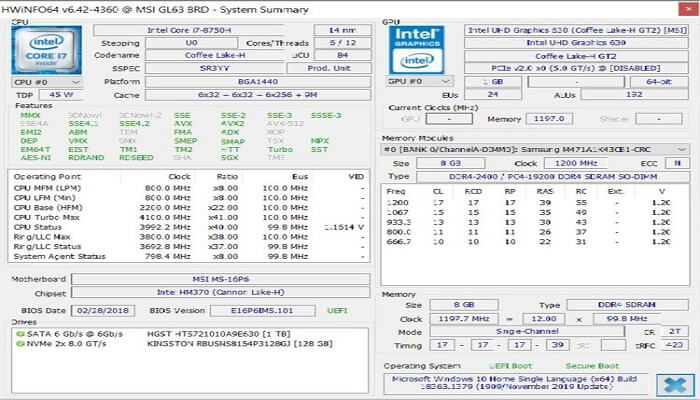
HWiNFO is must installed tool if you want the most accurate readings and output related to your computer components.
◙ Windows network diagnostic tools
Regardless of whether you are using Wi-Fi or Ethernet, there is a good chance you will encounter network problems in Windows 7, 8 & 10. This is one of the most common problems these days. That is why you need these tools.
1- WiFi Analyzer
WiFi Analyzer is a free tool that does exactly what its name suggests: it analyzes your Wi-Fi network setup to see if your wireless channel is interfering with other nearby Wi-Fi networks.
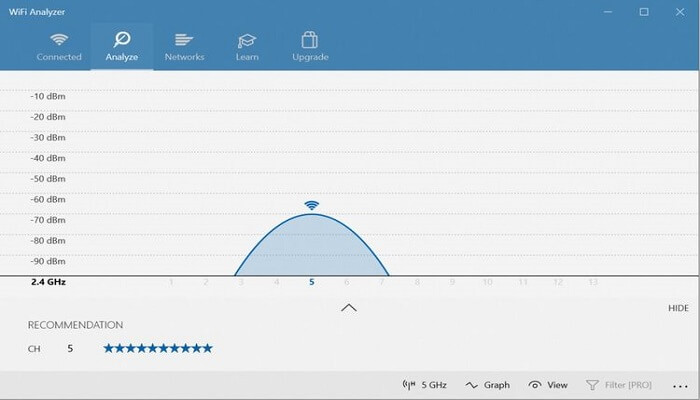
After the analysis, a channel setting is recommended for you. In dense cities and crowded apartments, It’s not perfect for your Windows PC. In some cases, however, it can significantly increase the speed and reliability of your WiFi. Well worth trying!
2- Angry IP Scanner
Angry IP Scanner is a nice tool. In short, it scans your network to see which IP addresses and ports are being used by which devices.
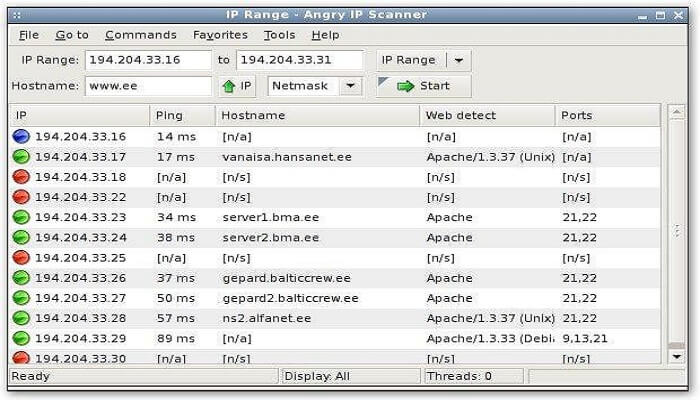
You can use it at home to see how many devices are connected to your network (to check if someone has hijacked your internet) or to get the IP address of a specific device (e.g. your smartphone) to determine.
3- SoftPerfect Network Scanner
SoftPerfect Network Scanner is a very easy and simple tool that can detect any device which is connected to your wifi network. This utility tool supports both IPv4 and IPv6 discovery.
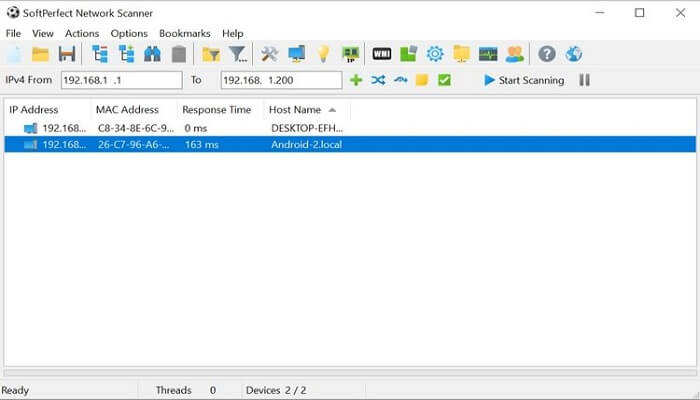
You can use SoftPerfect Network Scanner at home to monitor how many devices are connected to your internet (to check if someone is mooching off of your Internet connection). You can also find the IP address of any specific device including phone and tablet devices. You can initiate remote shutdowns for any device.
◙ Windows Drive Diagnostic Tools
1- CrystalDiskInfo
Have you ever wondered if your hard drive or solid-state drive is in good condition? It’s not easy to find out, especially with newer SSDs, which can die before you even realize something is wrong. (Learn the red flags of a bad SSD!). This is where CrystalDiskInfo comes in.
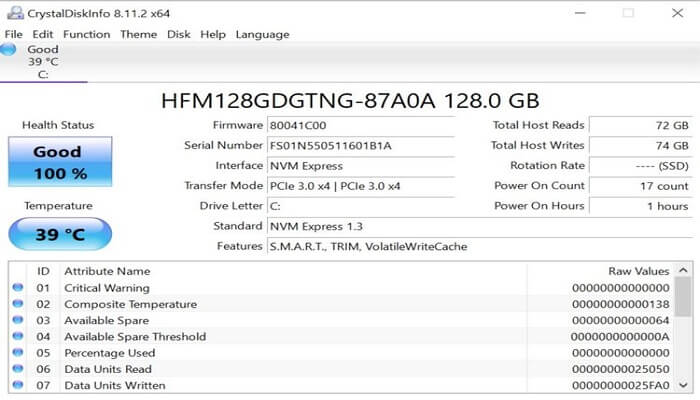
This simple program gives you a complete picture of the status of your data drives, including hard drives, SSDs, and USB drives. The details include temperature, ramp-up time, uptime, failure rates, and more. Total health status is also calculated.
Note that there is a sister program called CrystalDiskMark that you can use to compare your data drives (i.e., see how fast they can read and write data).
2- WinDirStat
WinDirStat is a must for me. I’ve been using it regularly for many years and it has never disappointed me. It stands for Windows Directory Statistics and does exactly what it says it does.
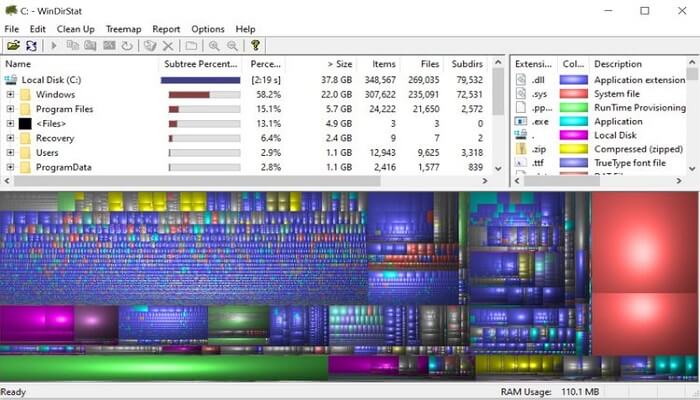
In short, it scans your data drives and shows how much space is being used by various folders and files, all of which are presented in a neat tree-based hierarchy and a detailed graphical view.
WinDirStat is not only perfect for visualizing the location of your data, but also for cleaning up lost files and restoring disk space.
◙ Windows memory diagnostic tools
RAM problems are another common problem for home computers. (More information on RAM can be found here.) These days, running out of physical RAM is way too easy, which can lead to system slowdowns and even crashes. Fortunately, diagnoses are usually straightforward.
1- Resource Monitor
Windows has a feature called Resource Monitor that was already implemented in Vista. You normally have to start it from Task Manager, but it’s now a separate app in Windows 10 that you can start from the Start menu.
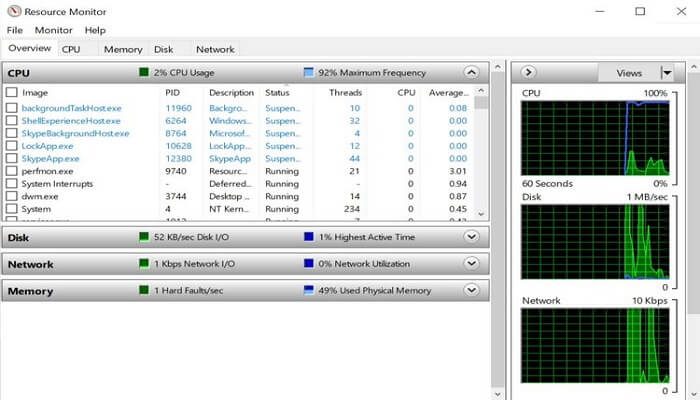
The Resource Monitor is an advanced method of viewing real-time data about your system and is typically used in conjunction with the Performance Monitor. However, I mainly use it for viewing process details and memory usage. Indeed, this is one of the easiest ways to troubleshoot RAM issues.
2- Windows Memory Diagnostics
Did you know that Windows has a built-in tool that you can use to physically test your RAM modules to see if they are healthy? An app called Windows Memory Diagnostic.
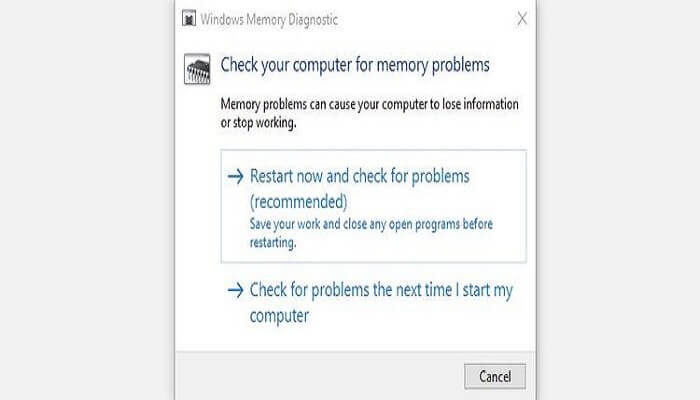
When you use it, your computer will restart. When booting, the tool will run several tests in your RAM. If errors or failures occur, they make an effort to let you know which module is the culprit. You should replace this module as soon as possible.
◙ Windows display diagnostic tools
1- JScreenFix
Take a good look at your screen in Windows 7, 8 & 10. Do you see stains that are not caused by dust spots? In this case, a pixel may be stuck. This is a pixel that is stuck on a certain color. These can be super annoying.
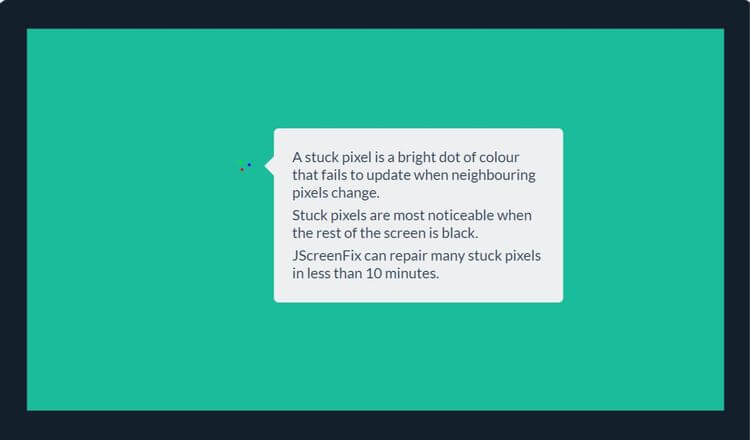
JScreenFix is a web tool that can help. All it does is blink the area of the screen with the stuck pixel at hundreds of different colors per second. This should loosen the pixel in about ten minutes.
Does it always work no? Sometimes a stuck pixel will get stuck on the screen forever due to a physical defect. But JScreenFix has a success rate of over 60 percent. Give it a try if you have your own pixel.
◙ Windows malware diagnostic tools
1- AdwCleaner
Not many people know about AdwCleaner which is a shame because it’s awesome and deserves more credit. It’s just a simple malware scanner, but it’s fast, efficient and free for Windows 7, 8 & 10. That’s all anyone can ask for.
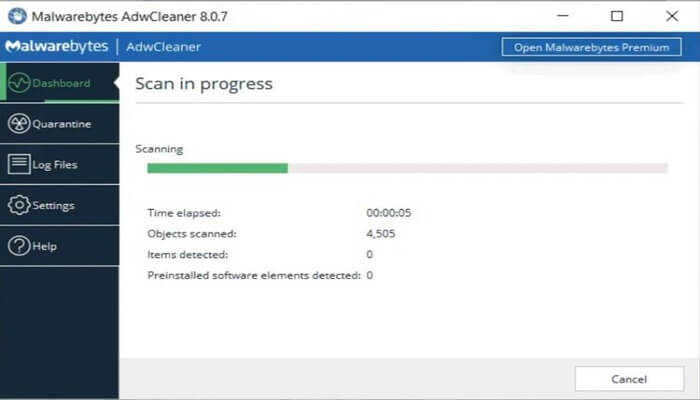
It is mainly designed for malware that comes with installation files. Hence, adware, toolbars, unwanted programs, browser hijackers, etc. are detected. The scan results are sorted by services, files, DLLs, scheduled tasks, registry entries and more.
Download: AdwCleaner
2- MalwareBytes
MalwareBytes has been the king of malware scanners for many years. Most people have heard of it at least once, but if you don’t know, many people know that it is a must-have application on any computer.
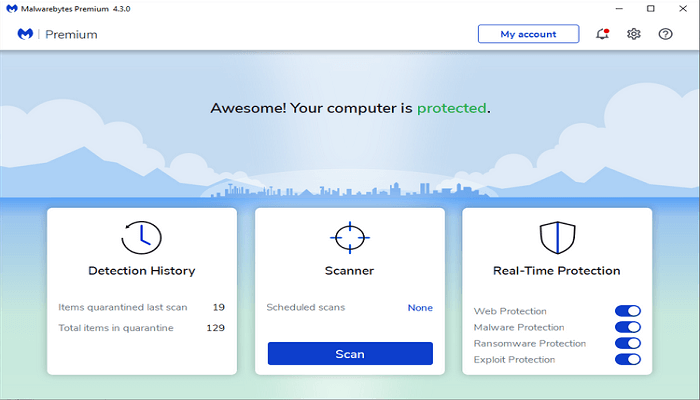
Note that Malwarebytes is available in both the free and premium versions. The free version is great, of course, and more than enough for most home users, but the premium version has all kinds of advanced features that are fantastic. Learn more about why Malwarebytes Premium is worth the money.
Download Malwarebyte
3- ClamWin
ClamWin may look primitive, but don’t let that fool you. It’s one of the best free antivirus scanners available right now. The scans can take a while, but they’ll detect just about anything, so it’s worth the tradeoff.
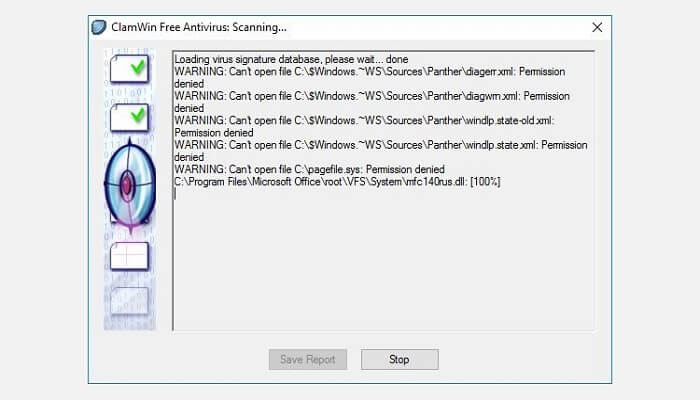
Why use ClamWin? Since, unlike the alternatives mentioned above, it is open source and this is important if you want to verify that a program is doing what it is supposed to be doing – especially if that program is a safety application. You can never be too careful.
How to Use these tools to diagnose Windows PC’s
We hope you find these tools useful. Do you need ALL of them? No, probably not. Just pick the ones that seem valuable to you and forget about the rest, at least for now.
You can always bookmark this page and refer to it if you ever encounter an issue that you have never seen before. Remember to reboot before troubleshooting.






